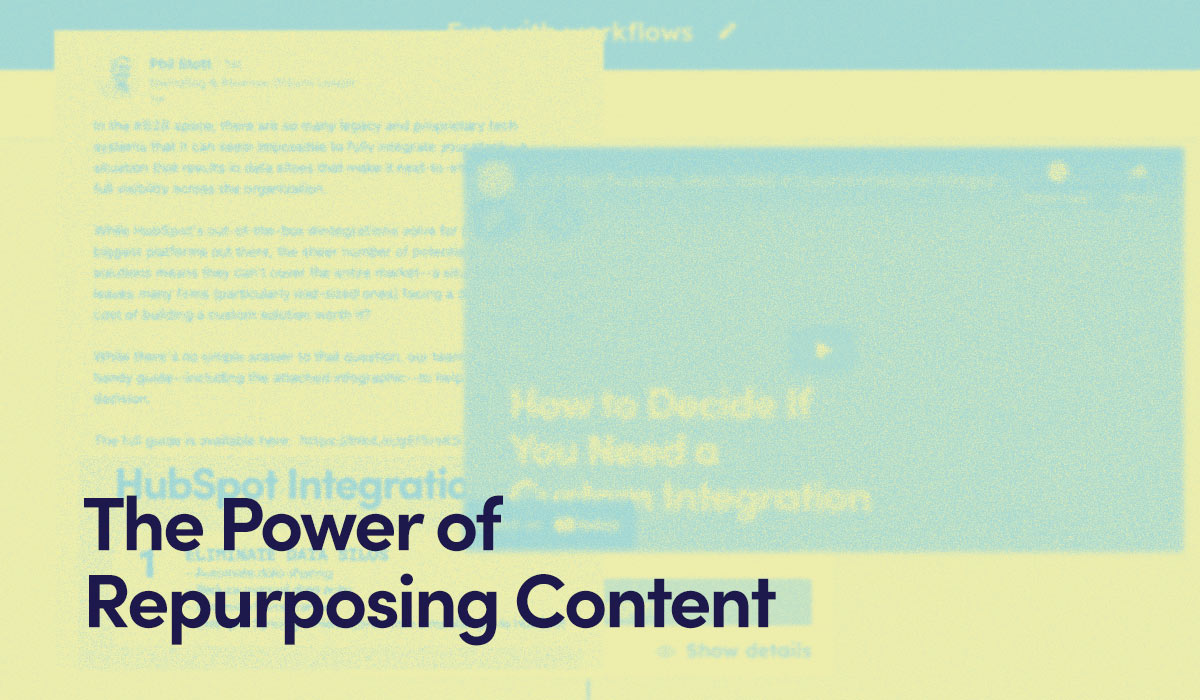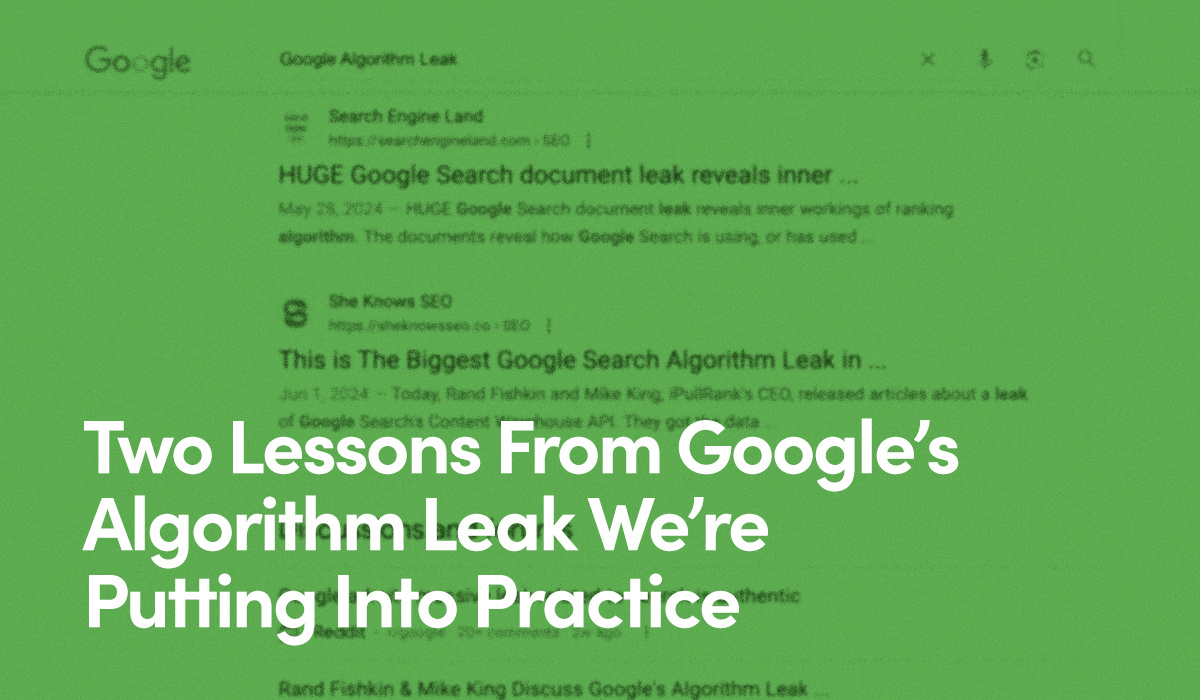There’s a lot of conflicting information flying around about the ideal length of a blog post. Some say that a blog must be more than 2,000 words in order for it to garner any SEO juice. Others argue that attention spans are lower than they’ve ever been, therefore blog posts should only be 400 words tops, lest the reader roll their eyes and exclaim “tl;dr” before bouncing from the web site.
The truth is that a blog post should be long enough to answer the query—2,000 words or 400 words, it doesn’t matter as long as the search is satisfied.
So, that’s it? Is this article officially the shortest blog in history? Well, hang on. That’s not it and this blog is not over. There are many factors that decide how long a blog post should be and why you should care. In this blog, we’ll roll through the reasoning and try our best to land on a definitive answer that satisfies your query.
Asked & Answered: The Ideal Length of a Blog Post
Content marketing has changed dramatically over the last decade. In the early days of SEO blogging, content marketers were content with “keyword stuffing,” the practice of inserting a large number of keywords into site content and meta tags in the attempt to artificially increase a page’s ranking in search results and drive more traffic to the site.
But it wasn’t long before the powers governing Google and other search engines (well, really just Google) grew hip to this attempted SEO ruse. Simply populating your site page and blog with an overabundance of keywords, thereby artificially increasing your word count, is no longer enough to appease the algorithm.
These days, in order to rise in Google rankings, it’s crucial for blogs and site pages to offer something of substantial value—information that answers targeted questions posed by users.
Google’s John Mueller said as much when recently addressing SEO best practices. The search engine behemoth’s Webmaster Trends Analyst tweeted:
“Word count is not indicative of quality. Some pages have a lot of words that say nothing. Some pages have very few words that are very important & relevant to queries. You know your content best (hopefully) and can decide whether it needs the details.”
And there it is. “You know your content best.” Who better than you to decide whether a topic requires 2,000 words of explanation or 200?
When Writing a Blog, Do What Comes Naturally
According to a HubSpot study from 2021, the ideal blog post length for SEO should be 2,100 to 2,400 words. But the main caveat remains: The blog must answer the search query without resorting to keyword stuffing or other unnatural blog-writing practices.
Depending on the search query, page one Google results might not be loaded with blog posts, but instead content deemed exceptionally resourceful by users, and by Google. And that’s where you want to land, squarely in the realm of well-constructed, thoughtful content that may or may not take the form of a blog.
In an “SEO Mythbusting” video, Google’s Martin Splitt said that word count is not a ranking factor:
“If you can say what the user needs to know in 50 words, that’s fantastic. If you need 100 words, that’s cool. If you need 2,000 words, that’s also absolutely acceptable. It’s about trying to figure out what’s the intention. If you see yourself repeating yourself multiple times and saying the same thing over and over again on the same page, what’s the point?”
But what if your competitors are all writing these sprawling 4,000-word blog posts and you’re sitting there with a paltry 500 words? Splitt offers some valuable insight on that as well:
“Just because other people are doing it, doesn’t mean they are doing it right. Again, try to understand what the users need. Maybe that blog with the larger word count accidentally hits enough of the information that people are looking for and actually fits the query intention of the user better than what you are writing. In this case, if you can reformulate it so that your 500 words are better, then go with that.”
Transform Your Marketing With Strategic Content
Ready to Convert More Leads Into Loyal Customers?
Discover Our Content Engineering Expertise arrow_forwardA Single Piece of Content Is Not Enough
The natural process of content planning should lead to blogs that are structured in a way that benefits readers. Let’s say you have a cluster of eight topics. Each of those topics should serve to address the needs of users in your particular domain. Rather than standing alone, these topics often add up to answer questions throughout the buyer’s journey—from awareness to decision making.
These blogs—all answering different questions and serving different purposes in the cluster—are often unique in terms of length. And you know what, that’s OK!
When it comes to SEO or keywords or content marketing in general, a single blog or site page is never going to be enough to catapult you in the rankings. You need thoughtful content that answers questions, posted consistently and frequently. Each piece of content should build on previous posts, while informing posts that are yet to come.
Crafting a comprehensive pillar is the ultimate way of making connections between multiple pieces of content. Essentially a longer, more in-depth blog, a pillar page, collects all aspects of a topic in a single post. Pillars are typically more detailed, and connected to cluster blogs via hyperlinks that direct back to the pillar page.
The Importance of Internal Content Linking
Internal linking is one of the fundamentals of SEO—and like most fundamentals, it’s easily overlooked. Internal linking is the framework that connects relevant content to one another, which helps Google understand that the pieces are related. This makes each individual blog even stronger, as the links strengthen each other’s “argument” and increase your authority about a given subject.
Linking provides a flow of traffic, enabling users to navigate the cluster from topic to topic in a way that’s intuitive. It’s even more imperative when considering the previously mentioned pillars, as, the individual blogs in a cluster link to one another and they all link back to the main topic pillar. This organizes your efforts even further, helps users answer their questions, and gives Google’s crawlers a basis with which to navigate your site.
Content Marketing Furthers the Conversation
Moving potential customers through the “funnel” to the decision-making stage of the buyer’s journey is no easy task. There are many components at play, and the length of your content is only one factor to consider. Get in touch with us to discuss your needs and discover how a content marketing partner can help extend the conversation.




